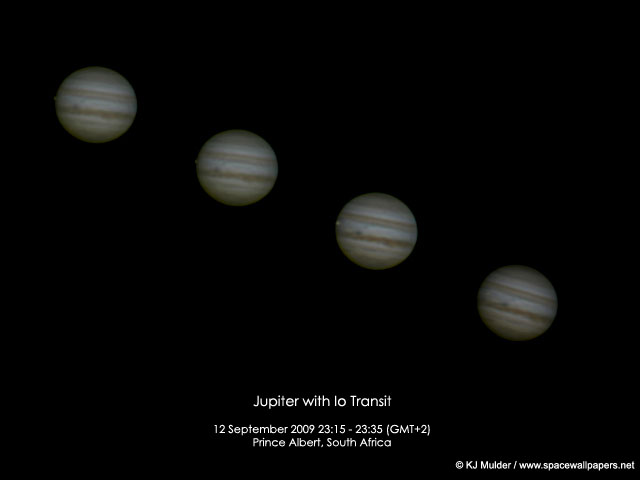Kerneels Mulder

On 11 September 2010 Venus was hidden by the moon in an occultation that was visible from South Africa. Kerneels Mulder managed to capture the tail end of the occultation in a beautiful series of photographs that have been highlighted internationally. I caught up with him, and asked a few questions:
Hi Kerneels, thanks for taking the time to talk to us. Could you tell us a little about yourself? How long have you been interested in Astronomy and what interested you in the field?
I’m Kerneels Mulder, a 28 year old amateur astronomer from Prince Albert, a little town in the Western Cape. My interest in astronomy started in childhood when I would spend hours laying on the grass in the backyard and looking up in wonder at the stars. I always wanted a telescope as a kid, but could never afford one.
I read many astronomy books and played armchair astronomer by collecting and staring at the wonderful images produced by the various NASA missions, the best of which came from Hubble. In 2005 I started the spacewallpapers.net website to share the images as desktop wallpapers. My goal with the site was to share my passion for astronomy and hopefully inspire people to get excited about the wonders space has to offer.
In 2008 I finally fulfilled my childhood dream and purchased my first telescope (and at the time I thought it would be my only telescope!), a 10″ Orion SkyQuest XT10 Classic Dobsonian. Since then I’ve constantly learning and observing new things. The Universe never seizes to amaze you, and there’s always something new to discover.
I know how you feel. I was lucky enough to have a generous uncle who loaned me various telescopes, but that was only temporary. Nowadays I do all my observing through either my trusty binoculars, or the naked eye. What telescope and camera do you currently use?
I’m largely a visual observing with a particular interest in Deep Space Objects (DSO’s). My main workhorse is the 10″ XT10. When I want the telescope to do all the work and for experimenting with imaging I use my 8″ Celestron NexStar 8SE (also on an Alt-Az mount) and Neximage web-cam. I also use a 90mm Skywatcher Achromatic refractor on an Alt-az mount and a 6″ Skywatcher Dob for those times I want something less cumbersome.
The occultation photos were captured with a borrowed Canon 1000D DSLR attached to the 90mm Refractor, the cheapest of the telescopes I own.
As far as software goes I make use of RegiStax, free software that help to get amazing results from video footage captured by the web-cam, and Photoshop to edit images.
How long have you been taking astronomical photos? Was it difficult to master?
I’m a complete beginner when it comes to imaging. I first started playing around with some imaging in late 2009 when I bought the 8SE and Neximage to see what a telescope with tracking is capable of. For serious astrophotography, especially DSO imaging, you need specialised equipment which, especially in South Africa, tend to be extremely expensive. The learning curve is great and astrophotography is seen as a completely separate hobby.
At the moment I’m more than happy to focus on visual observing and playing around using the modest equipment I have. Perhaps someday I will be able to get the right gear and start learning how to do some proper astrophotography.
My own image is nothing as impressive, but it’s still great to know that the world is seeing something you created. Someone couldn’t understand why I was so excited by this, and the best explanation I could come up with was that it was almost like having your home-made video of your garage band played on MTV!

For starting out in astronomy – learn the night sky before getting a telescope. Knowledge and appreciation of the night sky is the cornerstone for the hobby. A telescope makes it easier to see details, but if you can’t find it or appreciate the amazing scope of what you are observing then the telescope is pretty much useless!
For photography – use what you have. Experiment with the equipment you have available. You will be blown away by what can be achieved by simply pressing a camera to your eyepiece and taking a few photos. For example, this series of pictures (left) of Jupiter was taken with a simple web-cam connected up to a telescope
Most importantly – keep looking up! It’s amazing how many people never take the time just to look up at the stars in wonder.
